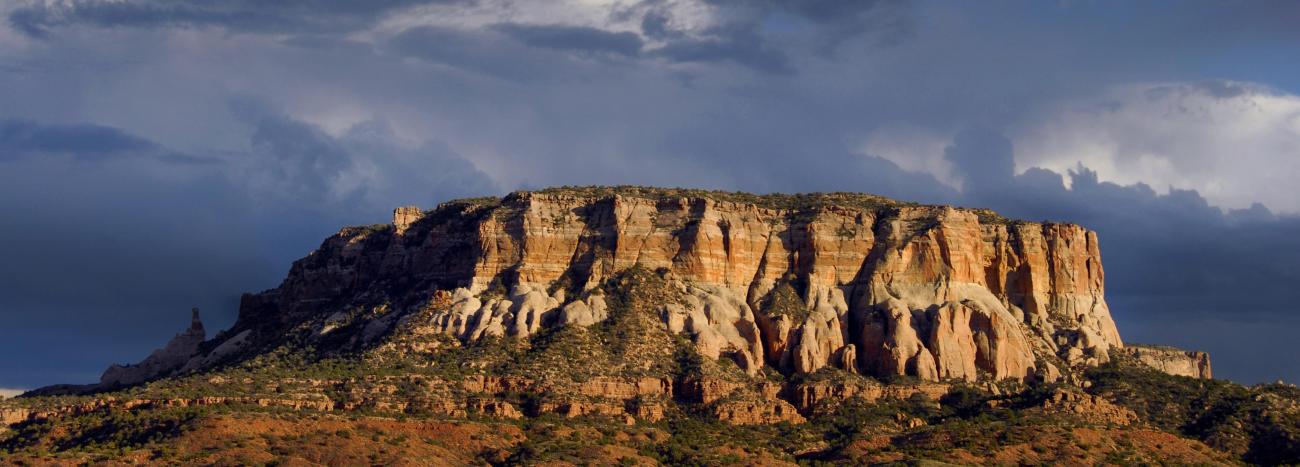
Protohistoric Zuni Social and Political Organization
Through analysis and interpretation of large-scale archaeological excavations of three late prehistoric Zuni towns, this research is illuminating the dramatic organizational developments of the final three centuries preceding the Spanish invasion and colonization of the Southwest U.S.
Project Details
The Zuni were the first Native Americans the Spanish explorers encountered when they entered the American Southwest nearly 500 years ago. Recent attention has been lavished on the transformations of Indian cultures following the Spanish invasion. Yet for the Zuni, the cultural developments of the 500 years preceding their encounter with Coronado were no less dramatic.
Through analysis and interpretation of large-scale archaeological excavations of three late prehistoric Zuni towns, the proposed research is illuminating the dramatic organizational developments of the final three centuries preceding the Spanish invasion. It has compiled archaeological documentation, and is analyzing and interpreting previously unreported collections deriving from the excavations of two early scientific expeditions at three late prehistoric Zuni towns: Heshotauthla, Halona and Kechipawan.
First, the Hemenway Expedition's 1888 excavations at Heshotauthla and Halona directed by Frank Cushing are far more extensive than more recent excavations of contemporaneous sites. Further, interpretation of those 19th century records has been greatly enhanced by ASU's recent excavation and survey at Heshotauthla. Second, The Cambridge University Museum's 1923 work at Kechipawan along with the Hendricks-Hodge Expedition's related work at Hawikuh are the only substantial scientific investigations of protohistoric Zuni towns. While less extensive than the Hawikuh excavation, the Kechipawan collection is better provenienced and more consistently documented. Comparison of Kechipawan and Hawikuh, two contemporaneous "Cities of Cibola," will allow assessment of the political relationships among the protohistoric towns.
Excavation on this scale (all together, more than 200 rooms and about 200 burials) will never again be possible. The project capitalizes on these extensive excavations to provide new insights into prehistoric Zuni social organization and the processes responsible for the initial population aggregation about A.D. 1200, the nucleation into large planned pueblos about A.D. 1275, and the shift in settlement pattern about A.D. 1400. The resulting monograph will present both substantial interpretations and abundant data from these unpublished cemetery and room excavations.
The Zuni case is particularly significant because the area is one of very few in the United States where a fertile archaeological record documents 1000 years of cultural continuity with a modern group having a strong traditional culture and rich ethnographic record. Reconstructing the profound social changes between A.D. 1240 and 1540 contributes to our understanding of the underlying processes involved in population aggregation and increasing organizational complexity. It also bears on our understanding of the effects of the European invasion on modern Zuni social institutions. As late prehistoric social and political changes throughout the Southwest were apparently inter-related, a refined understanding of the Zuni situation will benefit many broader inquiries. This work contributes substantially to the archaeological account of Zuni history, which is of interest not only to Southwest scholars, but to the Zuni people and broader public.
Partners: National Museum of the American Indian | Cambridge University of Archaeology and Anthropology
Research Team
- Keith Kintigh, Arizona State University
- Brenda Shears, Arizona State University
Funding
National Endowment for the Humanities
Funding completed
Outcomes
Kintigh, Keith W.
2000 Leadership Strategies in Protohistoric Zuni Towns. In Alternative Leadership Strategies in the Greater Southwest, pp. 95-116, edited by Barbara J. Mills. University of Arizona Press, Tucson.